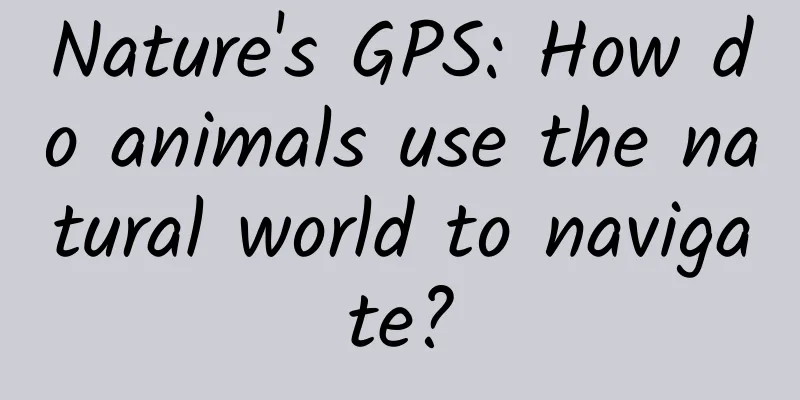Nature's GPS: How do animals use the natural world to navigate?

|
Millions of animals around the world follow the seasons, migrating to their wintering grounds and returning to their breeding grounds the following spring. The rise and fall of birds, mammals, fish and insects is a key component of Earth's biodiversity. Migration is a challenging strategy. For small animals like songbirds to be able to return to their breeding grounds from Africa or southern Europe, they need to be able to navigate to the same places over and over again. How they do this has puzzled scientists for more than 60 years. A study shows how tiny animals - with correspondingly small brains - can cross mountains, oceans and deserts without getting lost. Birds appear to use external cues available in their environment, such as the stars and Earth's magnetic field, to provide something like a map and compass. But how do they put these cues together? A paper describes how a small Eurasian songbird, the reed warbler, navigates. A small magnet was first attached to the bird's forehead, which interfered with its ability to sense the Earth's magnetic field. The researchers found that when their view of the stars was blocked, the birds were unable to find the correct direction for their migration. However, once they saw the stars, they were able to find their way again. Like a careful engineer, the evolutionary process of natural selection has built a fail-safe into birds' navigation systems, ensuring that a backup positioning device is available in cloudy weather. Another study by the research team showed how these reed warblers accurately judge their location during migration and how they cope with strong wind routes or obstacles such as the Alps. The researchers placed reed warblers in an artificial magnetic field that matched the natural magnetic field of the birds' northwest migration route. They then tested their sense of direction in a direction cage, a small funnel 30 centimeters in diameter that measures the direction the bird wants to take off by analyzing the position of its jumps in the cage. When placed in this artificial magnetic field, the birds changed their direction from southeast to southwest, suggesting that they had recognized the magnetic signal as foreign and were trying to return to their route. The technique, called "virtual displacement" because the bird never actually leaves the spot where it was captured for testing, has emerged as a new tool for understanding how animals sense and use Earth's magnetic field to navigate. Even more remarkable, the artificial magnetic field wasn't one the birds had encountered before while migrating. That meant they weren't responding to magnetic signals they'd learned. Instead, the birds used their instinctive sense of how the Earth's magnetic field changes with distance to figure out they were northwest of their flight path. Not bad for those little bird brains. Clearly, star fields and magnetic fields are both important cues for migrating birds. But human activity has the potential to disrupt these important cues. Artificial lights in cities reduce the visibility of the stars and the moon at night. For other animals, such as dung beetles and sand fleas, human activity has been shown to negatively affect their navigation abilities. What's more, man-made electromagnetic signals — such as those from radio towers or even electrical currents from everyday devices like kettles — can interfere with birds' ability to detect natural magnetic fields. Humans may be giving birds a double dose of pollution that their fail-safe systems can't overcome. It’s not fully understood how these pollutants affect migratory birds, but as we learn more about nature’s GPS, it’s critical to understand the risks that human activities pose to this remarkable navigation system. refer to: Migratory Eurasian Reed Warblers Can Use Magnetic Declination to Solve the Longitude Problem https://journals.biologists.com/jeb/article/224/22/jeb243337/273480 https://www.sciencedirect.com/science/article/pii/S0960982215009549 Just a moment... https://theconversation.com/natures-gps-how-animals-use-the-natural-world-to-perform-extraordinary-feats-of-navigation-173700?utm_medium=Social&utm_source=Twitter#Echobox=1640874203 To help build ecological civilization and thoroughly implement the "Outline of the National Science Literacy Action Plan (2021-2035)" and the "China Association for Science and Technology Science Popularization Development Plan (2021-2025)", as a national first-level society in the field of biodiversity, the China Biodiversity Conservation and Green Development Foundation will leverage the advantages of scientific research institutions and is committed to creating a socialized science communication work with comprehensive mobilization and participation by all people. In December 2021, it launched the "Green Association Biodiversity Science Popularization Mini Classroom" series. The "Green Association's Biodiversity Science Popularization Classroom" is characterized by "popular science". It disseminates knowledge about wild animal and plant species and biodiversity that are currently threatened with survival, promotes the mainstreaming of biodiversity, and calls on all sectors to work together to protect biodiversity, protect the habitats on which human beings depend for survival, and build a beautiful home where people and nature live in harmony. Translated by YJ Reviewed by Stan |
<<: Why do women's underwear always have a bow on the front?
>>: World's first! Gene-edited pig heart transplanted into human body
Recommend
What is the configuration for renting a server in the education industry?
Education is a sunrise industry and the market de...
You will regret it if you don't read this! Eating less meat leads to mental illness? Meat consumption is closely linked to depression, anxiety, and dementia
Meat, as an important component of the human diet...
10-year-old boy is nearly blind! Doctors remind: Don’t use eye drops randomly, especially these types…
Staring at mobile phones or computers for a long ...
How to combat online music piracy? The key is not just about how many copyrights you buy
Since the rise of online music, Chinese people ha...
The Double 11 battle is coming, don't worry, I'm not asking you to spend money
[51CTO.com original article] It is November at th...
Useful Information | Learn Pinduoduo’s 5 high-conversion marketing strategies!
Pinduoduo, a new internet celebrity and a three-y...
Why has Google failed to get Android development on track?
Introduction It's 2015 now, mobile is the new...
First discovery! Microplastics found in human breast milk
Microplastics, an "invisible killer" th...
A diver was bitten by a moray eel underwater and his blood turned green...
Tim Powell is a diving enthusiast. In 2010, he up...
Why did Alipay copy WeChat’s red envelope function?
[[140409]] On July 8, Alipay released the latest ...
A brief discussion on the deep learning technology behind AlphaGo
Introduction: There are many comments on Alfa Go,...
Cocos 2d-x v3.7 released - unified! powerful! all in one!
Recently, Cocos, the leading mobile game engine i...
What should operators do before, during and after an online event?
Today, taking online activities as an example, le...
The giant dragon crossing the Yellow River: China's largest diameter underwater shield tunnel begins shield excavation!
Author Li Chuanfu On September 1, 2024, on the no...
In ancient times, during the Clean Plate Campaign, people really had to take away what they couldn’t finish?
In the present moment The "Clean Plate Campa...









